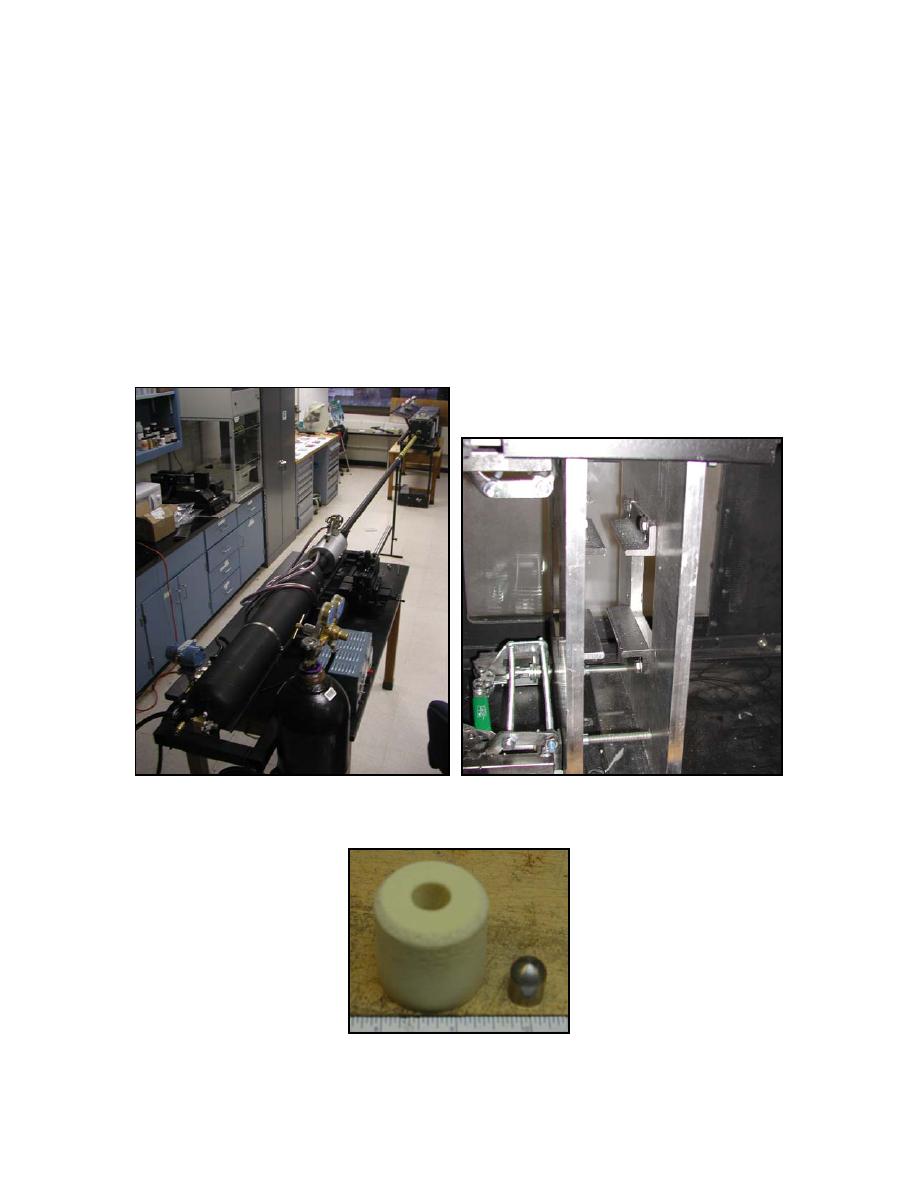
Intermediate-velocity impact test
As we could not get penetration under the low-velocity tests, we went to intermediate-
velocity tests using a gas gun. The intermediate-velocity impact gas gun apparatus is shown in
Figure 29. The apparatus consists of a pressure tank, remote firing valve, barrel, and capture
chamber. Nitrogen is used as the working fluid and is regulated to control the velocity. The
velocity of the projectile is measured through PC windows with light chronographs attached to
the capture chamber. The samples were rigidly clamped on two sides inside the capture chamber
(Fig. 30). A hemispherical projectile made of tool steel with a mass of 14.2 g was used (Fig. 31).
The specimen designations, tank pressures, projectile velocities, and resulting projectile energies
are shown in Table 3. The impact results of the PVC control, PVC 20-hour, PVC 200-hour, and
PC specimens are shown in Figure 32. The ballistic limit velocity for each specimen is shown in
Figure 33. Figures 3437 show the fracturing produced in the specimens by the projectile.
Figure 29. Intermediate-velocity-impact
Figure 30. Specimen fixture
for
gas gun apparatus.
intermediate-velocity impact test.
Figure 31. Tool steel hemispherical
projectile with polyethylene foam sabot.
28




 Previous Page
Previous Page
